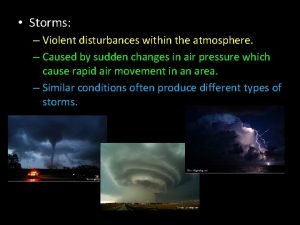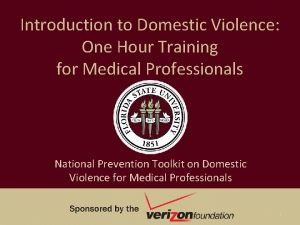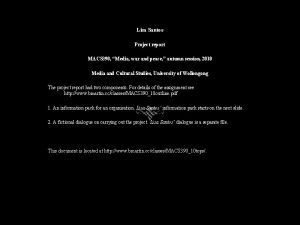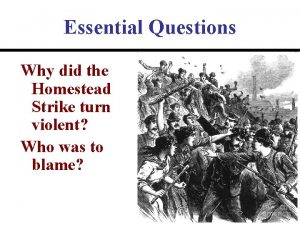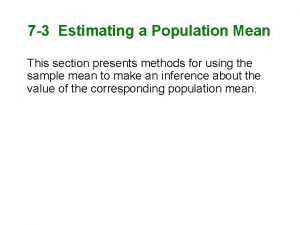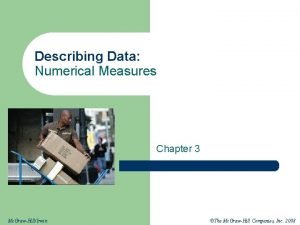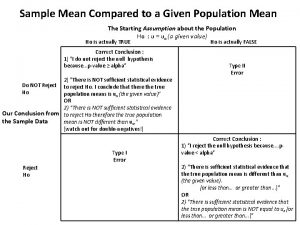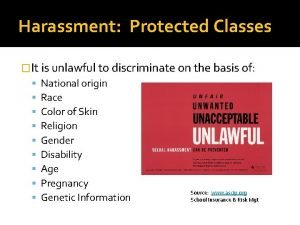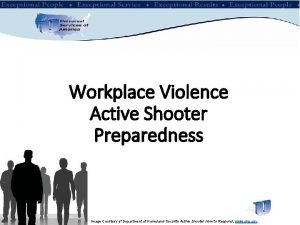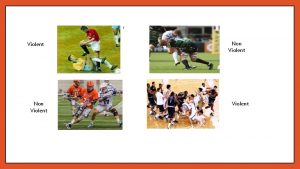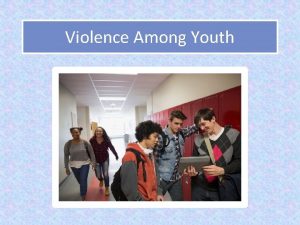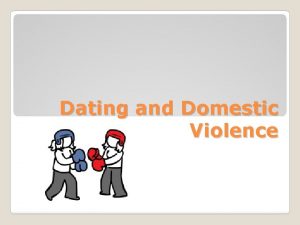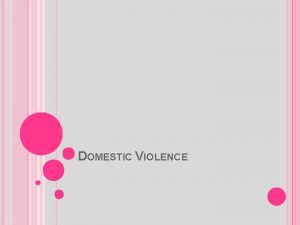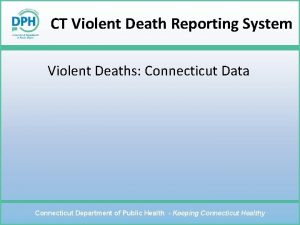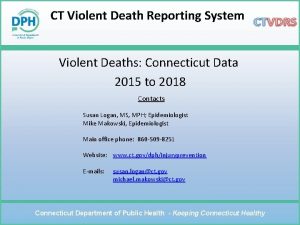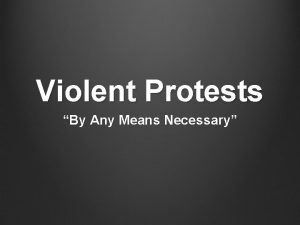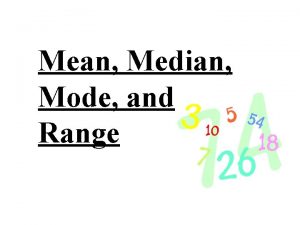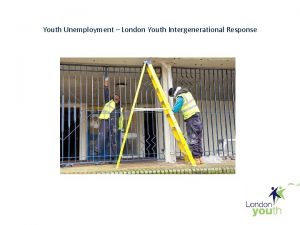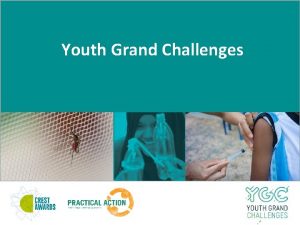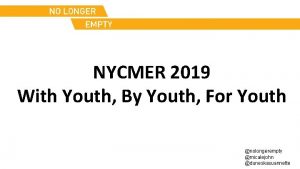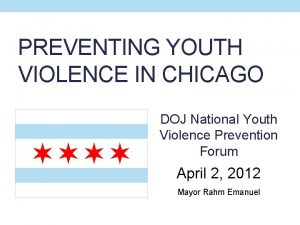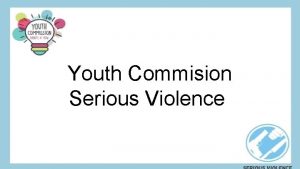Youth Violence Violence What do we mean violent




































- Slides: 36

Youth Violence

Violence: What do we mean? • • violent crime (homicide, etc. ) suicide fighting bullying sexual harassment child/adolescent abuse date/relationship violence gang-related violence

Status Offenses • • truancy from school underage drinking buying cigarettes running away

Violent Crime

Violent Crime Index Offenses • • • murder rape aggravated assault armed robbery arson

Data Sources • • • Youth Risk Behavior Survey National Youth Gang Survey Uniform Crime Reports (UCR), FBI National Crime Victimization Survey, DOJ Health Behavior of School-aged Children Survey, National Institute for Child Health & Development & WHO (bullying) • National School Climate Survey, 2001


New York Times/CBS News Poll October 1999

N. Y. Times/CBS News, October 1999

School Safety

Violent Schools: Myth or Reality? • schools among the safest places for children • homicides in school rare: of 2, 000 killings of children/year, 10 in or near schools • 300 youth killed by guns elsewhere for one killed by gun at school • % carrying gun/weapon to school declined 1996 -2001 • most school crime is theft, not violent: 1% report being victim of a “serious” school crime





Violent Crime Index Offenses by Sex, 1981 -1998 Arrests per 100, 000 males, age 10 -17 Arrests per 100, 000 females, age 10 -17

Youth Gangs

Gangs: “a group of youths or young adults in your jurisdiction that you or other responsible persons in your community are willing to identify or classify as a ‘gang’”…National Youth Gang Center, OJJDP

Youth Gangs • National Youth Gang Survey- surveys 5, 000 law enforcement agencies nationwide • 40% jurisdictions report active youth gangs in 2000 • prevalence of active youth gangs varies by region: West (74% of jurisdictions) vs Northeast (31%) • 42% youth gangs involved in street sale of drugs





Relationship/Dating Violence

Dating Violence the perpetration or threat of an act of violence by at least one member of an unmarried couple on the other member within the context of dating. This violence encompasses any form of sexual assault, physical violence, and verbal or emotional abuse.

Dating Violence • Estimated prevalence of nonsexual dating violence: – 22% among male & female h. s. students – 32% among college students • females more likely victims • 80 -90% of rapes on college campuses committed by someone victim knows • characteristics of perpetrators: sexually aggressive male peers, heavy alcohol or drug use, dating violence normative, traditional sex roles, rape myths, family history of observing or experiencing abuse

Safe Dates Foshee etal, AJPH 1998 • primary & secondary prevention • 8 th & 9 th graders in rural North Carolina • school: student theater; 10 session curriculum; poster contest to: – change dating violence norms – teach conflict management skills – normalize seeking help • community: train professionals, crisis lines, support groups • outcomes: – program students report less verbal, psychological, physical abuse than controls – program students more likely to endorse non-violence norms, have better communication skills & more favorable attitude towards seeking help

Incarcerated Youth

Health Link, Hunter College Rikers Island Connect to community services upon release Long-term case-management (“wrap around services”)

Bullying

A specific type of aggressive behavior: • intended to harm or disturb • occurring repeatedly, over time • powerful attacking less powerful

Takes many forms: • • threats physical harm rejection name calling teasing rumors take belongings

• 30% US middle school students “involved”: – 13% bullying – 11% being bullied – 6% both bullying & being bullied • males bully/bullied more than females • peaks in middle school • bullying/being bullied associated with adjustment problems • differences between those bullying & bullied • successful interventions in Norway, England, South Carolina

Critical Elements of Violence Prevention Programs Dusenbury etal, Jnl of School Health, 1997 • • • family, peer, community components begin early, then reinforce (“no quick fixes”) developmentally tailored promote personal & social competencies interactive teaching techniques culturally competent staff training/supervision (fidelity) positive school climate, starting in classroom promote norms vs. violence, bullying

Early Childhood Interventions • Nurse Home Visitation Program (Olds, 1998) • High/Scope Perry Preschool Project (Schweinhart & Weikart, 1993) • Seattle Social Development Project (Hawkins & Catalano, 1999)

Multisystemic Therapy • youth “nested” in interconnected systems • violent behavior maintained by problem transactions within/between systems (e. g. school & home) • builds on strengths • help parents deal with child’s behavior problems • help parents build support network/access services they need • masters level staff • low caseloads • 24/7 availability x 4 months • 50 hours face-face • effective reducing antisocial behavior of violent & chronic juvenile offenders
 Oxymorons in romeo and juliet
Oxymorons in romeo and juliet These violent delights will have violent ends
These violent delights will have violent ends Do violent games cause violence
Do violent games cause violence Sadlier vocabulary workshop level d unit 1
Sadlier vocabulary workshop level d unit 1 This is a violent disturbance in the atmosphere
This is a violent disturbance in the atmosphere Xor in python
Xor in python A helpful way for an na to respond to hallucinations is to
A helpful way for an na to respond to hallucinations is to Violent one hour
Violent one hour Violent vs nonviolent restraints
Violent vs nonviolent restraints Menurut model dulluth, dasar dari relasi yang non-violent
Menurut model dulluth, dasar dari relasi yang non-violent Santos
Santos Ptsd violent behavior
Ptsd violent behavior Violent motion
Violent motion Okonkwo's attitude as he prepares to return to the clan is
Okonkwo's attitude as he prepares to return to the clan is Denotative meaning example
Denotative meaning example Non violent crisis intervention techniques
Non violent crisis intervention techniques Nvc cheat sheet
Nvc cheat sheet Vir form
Vir form Thesis statement on gun control
Thesis statement on gun control Violent downdrafts that are concentrated in a local area
Violent downdrafts that are concentrated in a local area Why did the homestead strike fail
Why did the homestead strike fail Positive and negative connotation examples
Positive and negative connotation examples Homestead strike timeline answer key
Homestead strike timeline answer key Newton's first law roller coaster
Newton's first law roller coaster Base details siegfried sassoon
Base details siegfried sassoon Population mean and sample mean difference
Population mean and sample mean difference Define mean deviation
Define mean deviation Population mean from sample mean
Population mean from sample mean Mean of the sampling distribution of the sample mean
Mean of the sampling distribution of the sample mean Say mean matter transition words
Say mean matter transition words Steps for mean absolute deviation
Steps for mean absolute deviation What does mean mean
What does mean mean If σm = 4 and n = 36, then σ =:
If σm = 4 and n = 36, then σ =: Vxxxxx
Vxxxxx Workplace violence and harassment quiz answers
Workplace violence and harassment quiz answers Modifiers of human acts pdf
Modifiers of human acts pdf Dhs workplace violence
Dhs workplace violence




